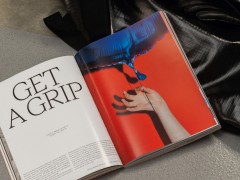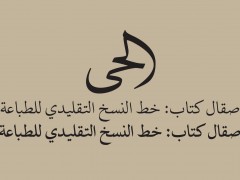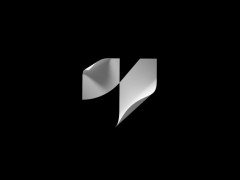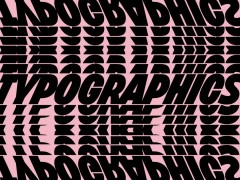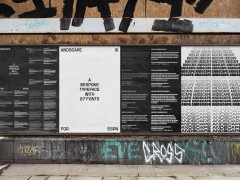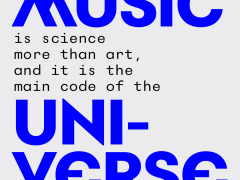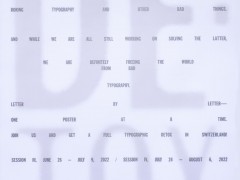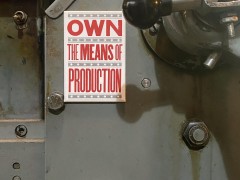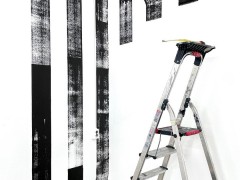Glyph-less no more: three awarded designs for Iceland's króna
“Why does the Icelandic króna not have its own glyph?” On the occasion of DesignMarch, an annual festival that celebrates creativity across many disciplines in Iceland, FÍT aka the Icelandic Graphic Design Association with support from the Central Bank of Iceland asked the question launching an open call for proposals.
“Why does the Icelandic króna not have its own glyph? It’s each country’s responsibility to submit its currency glyph to Unicode — which oversees the standards database for glyphs and emojis. Most of the big companies that work with some kind of text processing e.g Adobe, Apple, Facebook, Google, IBM & Microsoft use the Unicode standard” FÍT explained -FYI, the newest currency glyphs added to the Unicode database were the Bitcoin and Kyrgyzstani Som which were added in 2017.
Eventually designers provided answers for the glyph-less currency of Iceland with 70 entries that opted for legibility and prizes were awarded to three proposals by the jury, composed of three members from FÍT (Gísli B. Björnsson, Atli Hilmarsson and Kristín Eva Ólafsdóttir) and one representative from the Central Bank of Iceland (Stefán Rafn Sigurbjörnsson.)
3rd place - Icelandic crown by Jón Ari Helgason
“A powerful drawing with an obvious reference to foreign currencies and a decisive transverse line. Turning the K creates a crown that is a clever connection to the history and origins of the currency” read the jury’s statement.
“The origin of the word króna is derived from the words „krúna“ or „kóróna“. A simple symbol that uses the shapes of letters I and K and is easy to adapt to different fonts as well as handwriting” noted Jón Ari Helgason.
2nd place - Króna by Úlfur Kolka
The jury agreed that this symbol was “simple and stylish, as the dashes refer to well-known currencies such as the euro and the Japanese yen.”
“Large currencies such as the dollar, the euro, the pound sterling, and the yen are composed of a letter or symbol through which one or two lines pass. Many currency symbols that use two lines through a letter, however, become obscure when they have been greatly reduced in size. These include the Korean won (₩) and the Nigerian naira (₦). This could have been solved by removing the part of the letter that is between the two lines. It would also have made the symbols more refined, in my opinion. So I decided to do the same with the icon I designed” noted Úlfur Kolka.
1st place - Króna + Fé by Sigurður Oddsson, Elísabet Rún, Sunneva Snorradóttir and Viktor Weisshappel
In this proposal “a strong connection to runes attracted the attention of the jury. The symbol is simple enough to be implemented in different fonts and scales. The connection to runes was prominent in the competition and the jury believed that with this proposal, this route was very well implemented.”
“The inspiration is a Nordic runic font and the symbol is on the one hand formed from the rune ᚠ which means money or wealth. However, the symbol K forms an obvious reference to the króna. Thus, the new symbol connects the past and the present, the pan-Nordic cultural heritage and the Icelandic contemporary” said the team.
And now for some history on the design of money as we know it.
Older currency symbols have evolved slowly, often from previous currencies. The modern dollar and peso symbols originated from the mark employed to denote the Spanish dollar, also known as the piece of eight. This silver coin of approximately 38 mm (1.5 in) was minted in the Spanish Empire following a monetary reform in 1497 and was widely used as the first international currency because of its uniformity in standard and milling characteristics.
The Spanish dollar was the coin upon which the original United States dollar was based. As it was widely used in Europe, the Americas, and the Far East, it became the first world currency by the late 18th century.
Aside from the U.S. dollar, several other currencies, such as the Canadian dollar, the Japanese yen, the Chinese yuan, the Philippine peso, and several currencies in the rest of the Americas, were initially based on the Spanish dollar and other 8-real coins. Diverse theories link the origin of the "$" symbol to the columns and stripes that appear on one side of the Spanish dollar.
Elsewhere, the pound and lira symbols evolved from the letter L standing for libra, a Roman pound of silver.
Newly invented currencies and currencies adopting new symbols have symbolism meaningful to their adopter. For example, the euro sign € is based on ϵ, an archaic form of the Greek epsilon, to represent Europe; the Indian rupee sign ₹ is a blend of the Latin letter 'R' with the Devanagari letter र (ra); and the Russian Ruble sign ₽ is based on Р (the Cyrillic capital letter 'er').
There are also other considerations, such as how the symbol is rendered on computers and typesetting. For a new symbol to be used, its glyphs need to be added to computer fonts and keyboard mappings already in widespread use, keyboard layouts need to be altered or shortcuts added to type the new symbol.
For example, the European Commission was criticized for not considering how the euro sign would need to be customized to work in different fonts. The original design was also exceptionally wide. These two factors have led to most type foundries designing customized versions that match the look and feel of the font to which it is to be added, often with reduced width.
Back to where we started, the króna or krona (sometimes called Icelandic crown; sign: kr) is the currency of Iceland. Iceland is the second-smallest country by population, after Seychelles, to have its own currency and monetary policy.
Like the Nordic currencies (such as the Danish krone, Swedish krona and Norwegian krone) that participated in the historical Scandinavian Monetary Union, the name króna (meaning crown) comes from the Latin word corona ("crown").
Explore more here.
Tags/ design, competition, iceland, glyph, currency, symbol



